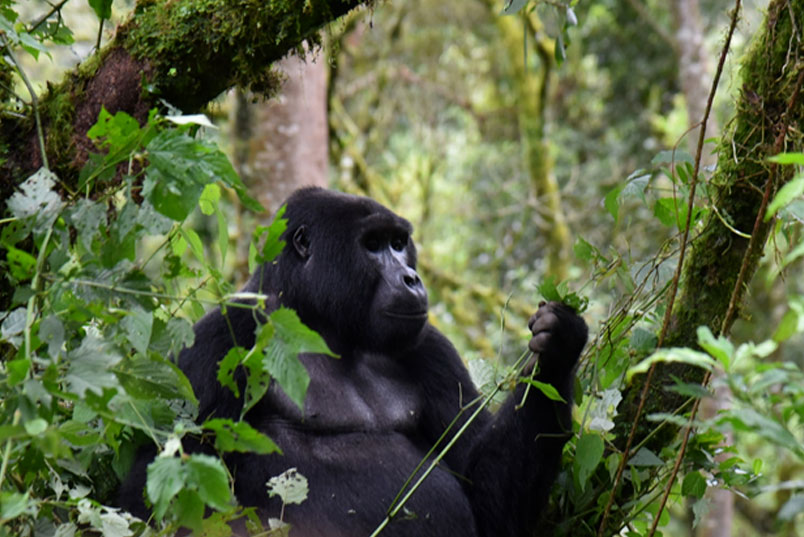
Overview
Gorilla trekking is considered as the most fulfilling adventure travel experience for travelers on a safari in Uganda, DRC or Rwanda. There is no better time of the year to go for these adventures because gorilla trekking is conducted throughout the year and each time of the year has its own merits and demerits.
Uganda, Rwanda and Congo receive the same type of climate since they lie in the tropics. It’s important to note that prior to choosing your ideal trekking seasons, mountain gorillas live in the tropical rain forests characteristic of rainfall meaning that not even the dry season is completely dry. There are two distinct seasons, high and low season, each of these season has its own advantages and disadvantages.
The high season
This is in the drier months of January, February, June, July, August, September and mid- December. Most travelers like to plan and book during this season since there is usually less rainfall or no rainfall at all; this makes the park fairly dry making the forest trails easier to navigate with minimal gorilla trekking fitness required. January and February are usually fairly dry, with Rwanda, Uganda and DRC all experiencing good conditions for trekking at a time of year.
For those challenged elderly and disabled persons intending to go trekking, a sedan chair carried by local porters can be arranged on request and prior planning is necessary if you are travelling in the high seasons.
Permits
The trekking permits during the high season are scarce and usually sell out quickly. Prior booking for the permits is advisable.
Merits
- There is less rainfall in this period of the year therefore, little interruptions from the weather may come up
- Access to the roads to the gorilla sectors are dry and passable compared to the rainy seasons, also the trails in the forest are very dry, making it possible to hike deep into the forest.
- The bushes and shrubs in the gorilla destinations are short which enables clear viewing of the mountain gorillas and other wild species.
Demerits
• Gorilla permits are on a competition since there is a number of visitors flocking these countries with gorilla trekking as their main concern.
• During the season, accommodation facilities are very expensive with a number of travelers booking in.
Low season
This falls in the months of March, April, May, November and early December. During these months, there is plenty of rainfall especially in the afternoons something that discourages most of the travelers from venturing into low season gorilla trekking. However, it is ideal for travelers seeking to trek at the most affordable price during the low season. March, April, November and May form the rainy season in these countries, as well as in Cameroon. Some mountain gorilla permits in Uganda and DRC may have discounts in April and May.
Merits
- Most safari companies offer very competitive gorilla safari packages
- Lodges offer an amazing discount on the accommodation facilities
- Gorilla trekking permits are readily available
- The treks are usually shorter due to the abundance of food at the foot of the mountains.
- The season is crowd free with less than 8 persons
- The vegetation is greener with amazing landscapes which makes photography spectacular.
Demerits
- The low season is very wet with a lot of rain. This makes the trails slippery which makes trekking challenging.
Survival tip in the low season
• Trekking during the low seasons means that it can rain every day however, it rains mostly at night and the early morning hours leaving the rest of the daytime fairly dry with light showers. In order to keep warm during such rainy seasons, you should make sure that what you wear is all water proof starting from the hiking boots, light rain jacket, and water proof trousers made of nylon, long sleeved shirt, warm socks, hat, and water proof day-pack.
• You can also hire a porter to lighten your load at a very low porter’s fee.







